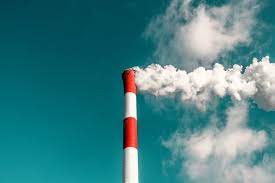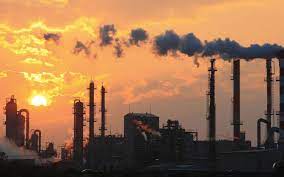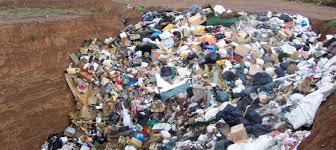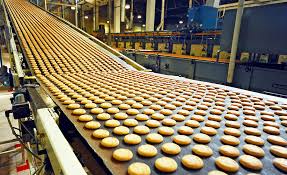Air Pollution, Air Quality, Composition of Air, and Air Pollutants
Air is a mixture of gases that covers the earth atmosphere. Gases that make up air are nitrogen, oxygen, argon, carbon (IV) oxide, neon, helium, methane, krypton, oxides of nitrogen and Sulphur, ammonia etc. (Vanloon, 2004).
Air is essential to living on earth, for example, man and animals use oxygen for breathing while they release carbon dioxide, which is used by plants for the manufacture of food through a process called photosynthesis.
Air Pollution: Air Quality
The quality of air can be affected by air pollution. Air pollution occurs when certain gases and particles build up in the atmosphere to such levels that they can cause harm to our health, causing breathing and respiratory problems, and even resulting in premature death, as well as damaging the environment around us.
These gases and particles (known as pollutants) tend to come from man-made sources, including the burning of fossil fuels such as coal, oil, petrol or diesel, but can also come from natural sources such as volcanic eruptions and forest fires. Pollutants can be in the form of solid particles, liquid droplets or gases.
The science of air pollution centers on measuring, tracking, and predicting concentrations of key chemicals in the atmosphere. Four types of processes affect air pollution levels:
Emissions
Chemicals are emitted to the atmosphere by a range of sources. Anthropogenic emissions come from human activities, such as burning fossil fuel.
Biogenic emissions are produced by natural functions of biological organisms, such as microbial breakdown of organic materials. Emissions can also come from nonliving natural sources, most notably volcanic eruptions and desert dust.
Chemistry
Many types of chemical reactions in the atmosphere create chemical pollutants in the atmosphere.
Transport
Winds can carry pollutants far from their sources, so that emissions in one region cause environmental impacts far away. Long-range transport complicates efforts to control air pollution because it can be hard to distinguish effects caused by local versus distant sources and to determine who should bear the costs of reducing emissions.
Deposition
Materials in the atmosphere return to Earth, either because they are directly absorbed or taken up in a chemical reaction (such as photosynthesis) or because they are scavenged from the atmosphere and carried to Earth by rain, snow, or fog.
Composition of Air
Air is a non-homogeneous mixture of different gases that surround the planet. Clean air is very important as it provides oxygen and other gases that are essential to life on earth.
There are two ways by which we can represent the composition of air:
Percentage of gas by volume;
Percentage of the gas by mass.
The composition of dry air at sea level is given in Table 2.1
Table 2.1: General Composition of Air (Bolz & Tuve, 1973)
| S/N | Gas | Volume (%) | Mass (%) | Molecular weight (kg/kmol) | Molecular weight in air | |
| 1. | Nitrogen | 78.03 | 75.46 | 28.015 | 21.88 | |
| 2. | Oxygen | 20.99 | 23.19 | 32.00 | 6.704 | |
| 3. | Carbon dioxide | 0.03 | 0.05 | 44.003 | 0.013 | |
| 4. | Hydrogen | 0.01 | 0.0007 | 2.016 | 0 | |
| 5. | Monatomic gases (Ar, Rn, He,Kr, Ne) | 0.94 | 1.30 | 39.943 | 0.373 | |
| Total | 100.00 | 100.0 |
It is important to note that, the composition of different gases (in dry air) by mass is a fixed one whereas the percentage composition of the gases by volume or mass in wet air i.e., air containing moisture is dependent on humidity or the moisture in the air.
This is because of the fact that with change in the humidity, the volume and the density of air changes, which results in the change in volume percentage.
Read Also : Tools for Air, Water and Soil Analysis
Air Pollutants

Air pollutants are found in the form of solid particles, liquid droplets or gases, and many of them are created by human activity and natural processes. Man plays a key factor in air pollution.
Some of the ways through which the ambient air is polluted by man include; industries, automobiles, and power generation. In indoor environments, tobacco smoke and combustion of fuels are the most significant sources.
Also, construction material, furniture, carpeting, air conditioning, home cleaning agents and insecticides are other significant sources of chemical and biological pollutants.
Air pollutants can have serious effects which could be acute or chronic. The health effects of air pollution range from minor irritation of eyes, allergies, upper respiratory system to chronic respiratory diseases, heart disease, lung cancer, and even death.
Air pollution may also cause harm to other living organisms such as animals and food crops, and may damage the natural or built environment.
Health impact of air pollution depends on the pollutant type, its concentration in the air, length of exposure, other pollutants in the air, and individual susceptibility.
For example, carbon monoxide combines with hemoglobin to form carboxyl-hemoglobin, which reduces the oxygen carrying capacity of the blood and can contribute to anemia and adverse pregnancy outcomes, including miscarriage, stillbirth, low birth weight, and early infant mortality.
Some other problems associated with pollution of the atmospheric air include shortage of oxygen for animal respiration, poor visibility, irritation of the eyes and unpleasant odours (Vinod, 2003).
The presence of the oxides of nitrogen (N2O, NO2, NO), carbon (CO, CO2,) Sulphur (SO2, SO3) and other gases like methane (CH4), chlorofluorocarbons (CFCS), hydrocarbons, fumes, dust and sprays in the air makes the air to be polluted (Dara, 2006).
Generally, any substance introduced into the atmosphere that has damaging effects on living things and the environment is considered as an air pollutant.
Air pollutants can be classified as: Primary pollutant, and Secondary pollutant.
1. Primary Air Pollutants
Primary air pollutants are emitted directly into the air from identifiable sources. Primary pollutants are produced by processes such as ash from a volcanic eruption, carbon monoxide gas from motor vehicle exhausts or Sulphur dioxide released from the factories.
These pollutants can have dangerous effects on health when released into the atmosphere both directly and as precursors of secondary air pollutants.
2. Secondary Air Pollutants
Secondary pollutants are produced when primary pollutants interacts with one another in the atmosphere, this reaction forms a harmful product.
Secondary air pollutants include ground level ozone, PAN (Peroxyl acetyl nitrate), photochemical smog and aerosols.
Some pollutants may be both primary and secondary: they are both emitted directly and formed from other primary pollutants.
Read Also : Measurements of Air Quality and Air Pollution
Common Air Pollutants
The U.S. Environmental Protection Agency (EPA) has named the six most common air pollutants.
These pollutants are called criteria pollutants because they are regulated by developing limits that are based on human and/or environmental criteria:
Ground-level ozone(O3)
Ozone is comprised of three oxygen atoms. Depending on its location in the atmosphere, ozone can be ‘good’ or ‘bad’. Ground level ozone is a pernicious secondary air pollutant, toxic to both humans and vegetation.
It is formed in surface air (and more generally in the troposphere) by oxidation of VOCs (volatile organic compounds) and carbon monoxide in the presence of NOx. The mechanism involves hundreds of chemically interactive species:
VOC + OH → HO2 + other products =>HO2 + NO → OH + NO2
=>NO2 + hν → + O => O+O2+M→O3+M
An important aspect of this mechanism is that NOx and OH act as catalysts – that is, they speed up the rate of ozone generation without being consumed themselves. Instead they cycle rapidly between NO and NO2, and between OH and HO2.
This formation mechanism for ozone at ground level is totally different from that for ozone formation in the stratosphere. In the stratosphere ozone is produced from photolysis of oxygen:
O2 + hν → O + O => O + O2 + M → O3 + M.
This process does not take place in the troposphere because the strong (< 240 nm) UV photons needed to dissociate molecular oxygen are depleted by the ozone overhead.
Particulate Matter (Aerosols)
Solid and liquid particles that are suspended in the air are referred to as aerosols or particulate matter (PM). These typically measure between 0.01 and 10 µm in diameter.
Most aerosols are found in the lower troposphere, where they have a residence time of a few days. Large aerosol particles (usually 1 to 10 µm) are generated when winds blow sea salt, dust, and other debris into the atmosphere.
Fine aerosol particles with diameters less than 1 µm are mainly produced when precursor gases condense in the atmosphere. Major components of fine aerosols are sulfate, nitrate, organic carbon, and elemental carbon.
Elemental carbon particles are emitted by combustion, which is also a major source of organic carbon particles.
Light-absorbing carbon particles emitted by combustion are called black carbon or soot; they are important agents for climate change and are also suspected to be particularly hazardous for human health.
High concentrations of aerosols are a major cause of cardiovascular disease and are also suspected to cause cancer.
Fine particles are especially serious threats because they are small enough to be absorbed deeply into the lungs, and sometimes even into the bloodstream.
Aerosols also have important radioactive effects in the atmosphere. Particles are said to scatter light when they alter the direction of radiation beams without absorbing radiation.
This is the principal mechanism limiting visibility in the atmosphere. When relative humidity is high, aerosols absorb water, which causes them to swell and increases their cross-sectional area for scattering, creating haze.
Without aerosol pollution our visual range would typically be about 200 miles, but haze can reduce visibility significantly.
Aerosols have a cooling effect on Earth’s climate when they scatter solar radiation because some of the scattered light is reflected back into space. In contrast, some aerosol particles such as soot absorb radiation and have a warming effect. Aerosol particles can influence Earth’s climate indirectly.
Carbon monoxide (CO)
CO is an odorless, colorless gas formed by incomplete combustion of carbon in fuel. The main source is motor vehicle exhaust, along with industrial processes and biomass burning.
Carbon monoxide binds to hemoglobin in red blood cells, reducing their ability to transport and release oxygen throughout the body. Low exposures can aggravate cardiac ailments, while high exposures cause central nervous system impairment or death.
Nitrogen oxides (NO and NO2, referred together as NOx)
Nitrogen oxides are highly reactive gases formed when oxygen and nitrogen react at high temperatures during combustion or lightning strikes. Nitrogen present in fuel can also be emitted as NOx during combustion.
In the atmosphere NOx reacts with volatile organic compounds (VOCs) and carbon monoxide to produce ground-level ozone through a complicated chain reaction mechanism.
It is eventually oxidized to nitric acid (HNO3). Like sulfuric acid, nitric acid contributes to acid deposition and to aerosol formation.
Sulfur dioxide (SO2)
SO2 is produced by volcanic eruptions and industrial processes. SO2 is a gas formed when sulfur is exposed to oxygen at high temperatures during fossil fuel combustion, oil refining, or metal smelting.
SO2 is toxic at high concentrations, but its principal air pollution effects are associated with the formation of acid rain and aerosols.
SO2 dissolves in cloud droplets and oxidizes to form sulfuric acid (H2SO 4), which can fall to Earth as acid rain or snow or form sulfate aerosol particles in the atmosphere. Pollution from SO2 has been linked to many adverse health effects on the respiratory system.
Lead
Lead is a toxic heavy metal, found naturally in the environment. It is a common pollutant in manufactured products. Motor vehicles and industries are the largest source of lead emissions.
Lead can affect the nervous system, kidney function, immune system, reproductive and development systems and the cardiovascular system.
Hazardous Air Pollutants
Toxic air pollutants, also known as hazardous air pollutants (HAPs), are those pollutants that are known or suspected to cause cancer, other serious health effects (including reproductive effects or birth defects), or adverse environmental effects. Regulatory bodies work together with government at all levels to reduce air emissions of HAPs to the environment.
Example of HAPs includes benzene, which is found in gasoline; perchloroethylene, which is emitted from some dry cleaning facilities; and methylene chloride, which is used as a solvent and paint stripper by a number of industries.
Other examples are dioxins, asbestos, toluene, and metals such as cadmium, mercury, chromium, and lead compounds.
In summary, pollutants in the atmosphere cause harmful effects to both humans and animals, they also affect the environment. Pollutants in the ambient air must be monitored to see that their levels do not exceed the permitted limits.
Read Also : What You Should Know Before Buying a Farm



